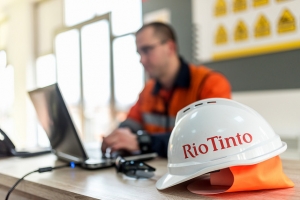


(Posted on 10/12/20)
Rio Tinto has disclosed to the Australian Securities Exchange (ASX) a maiden Ore Reserve and updated Mineral Resource at the 100% owned Jadar lithium-borates project in western Serbia.
The Ore Reserve is 16.6 Mt at 1.81% Li2O and 13.4% B2O3
The Mineral Resource underlying the maiden Ore Reserve has been updated to incorporate additional drilling which resulted in an updated geological model. Mineral Resources are reported exclusive of Ore Reserves.
The Mineral Resource comprises 55.2 Mt of Indicated Resource at 1.68% Li2O and 17.9% B2O3 with an additional 84.1 Mt of Inferred Resource at 1.84% Li2O and 12.6% B2O3
The update precedes the release of the project’s ‘Elaborate of Resources and Reserves’, reporting required under the Serbian Reporting Code YU53/79. Declaration of resources and reserves is an important milestone as the project progresses towards the award of an exploitation license, the precursor to a construction licence.
Pre-feasibility studies have shown that the Jadar project has the potential to produce both battery grade lithium carbonate and boric acid. The deposit is located on the doorstep of the European Union, one of the fastest growing electric vehicle (EV) markets in the world, and has the potential to provide lithium products into the EV value chain for decades. Boric acid is, a key raw material for advanced glass and fertilizer products and would be integrated with and complimentary to Rio Tinto’s established position in this market. The scale and high grade nature of the Jadar mineralisation provides the potential for a long life operation in the first quartile of the industry cost curve for both products.
The project under study consists of an underground mine, sustainable industrial processing and waste facilities as well as associated infrastructure. Jadar, one of the largest greenfield lithium projects in development, would be capable of producing approximately 55 thousand tonnes of battery grade lithium carbonate, as well as 160 thousand tonnes of boric acid (B2O3 units) and 255 thousand tonnes of sodium sulfate as by-products per annum. It represents a significant investment for Serbia with both direct and indirect economic benefits, and would become the country’s second largest exporter.
At the end of July 2020, the project moved into feasibility study, with an investment of almost $200 million on a scope that includes detailed engineering, land acquisition, workforce and supply preparation for construction, permitting and the early infrastructure development. The feasibility study is expected to be complete at the end of 2021 and, if approved, construction could take up to 4 years.
ADM and Mitsubishi Corporation have signed a non-binding memorandum of understanding to form a strategic... Read more
ESL Shipping and global steel manufacturer SSAB have agreed on a multi-year extension of the agreement... Read more
Anglo American’s Sakatti copper and polymetallic project in Finland has been designated as a &... Read more
FEFAC, representing the EU compound feed and premix manufacturers, noted with deep concern the announced... Read more
Catering to the growing demand from India’s confectionery, infant formula, and dairy sectors,... Read more
Khalifa Economic Zones Abu Dhabi – KEZAD Group, the largest operator of integrated and purpose... Read more
Rio Tinto will invest $1.8 billion1 to develop the Brockman Syncline 1 mine project (BS1), extending... Read more
Catherine Cobden, President and CEO of the Canadian Steel Producers Association (CSPA), has released... Read more
Enough domestic ferrous scrap is available for electric arc furnace (EAF) steelmakers to supply nearly... Read more
Cargill’s Ocean Transportation business and leading tanker shipping company, Hafnia, have joined... Read more